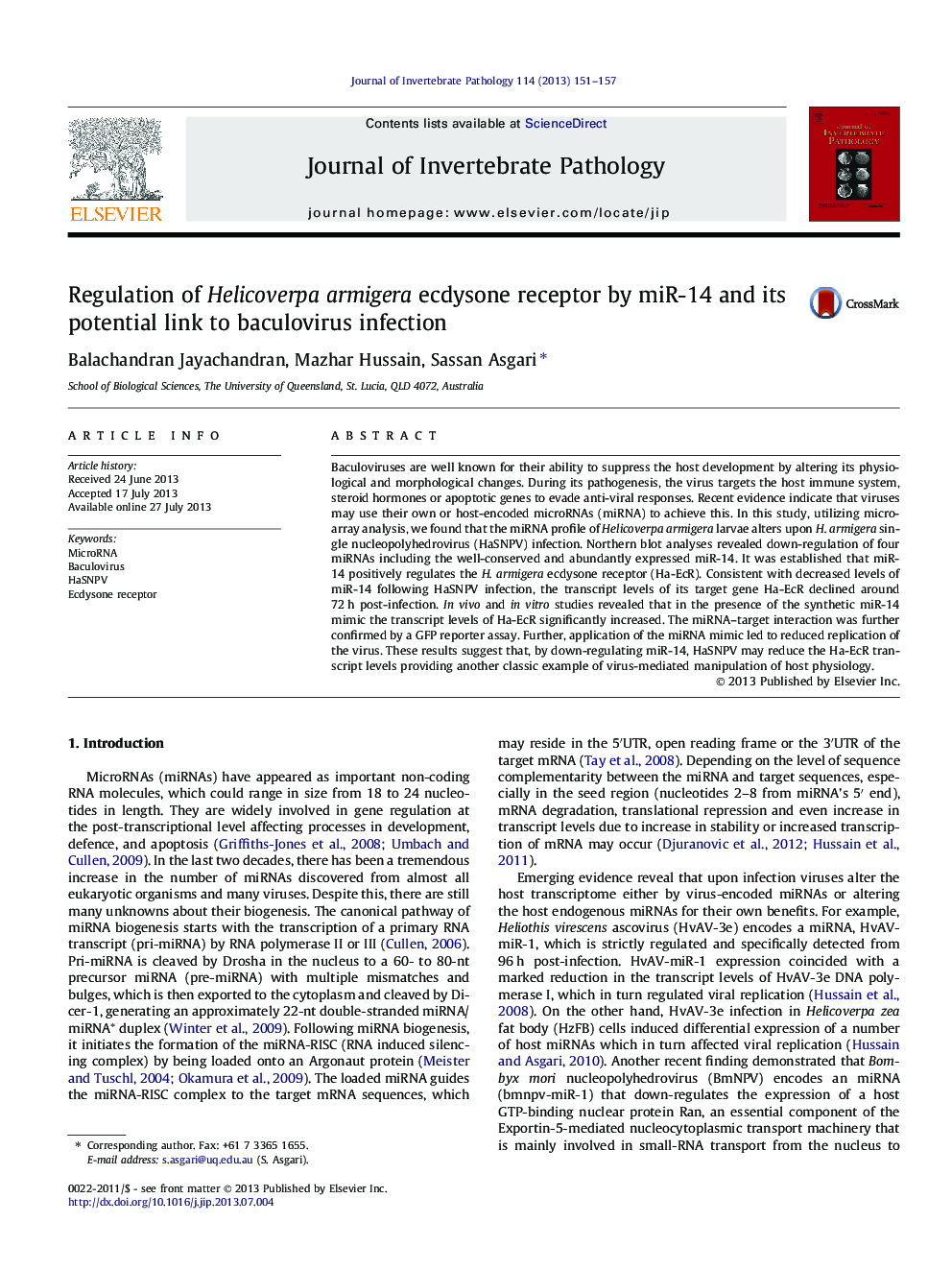| Article ID | Journal | Published Year | Pages | File Type |
|---|---|---|---|---|
| 4557785 | Journal of Invertebrate Pathology | 2013 | 7 Pages |
•H. armigera miRNAs were differentially expressed following HaSNPV infection.•miR-14 and its target gene, ecdysone receptor, were down-regulated.•In vivo and in vitro analysis showed that miR-14 positively regulates the target.•By down-regulating miR-14, HaSNPV optimises its replication.
Baculoviruses are well known for their ability to suppress the host development by altering its physiological and morphological changes. During its pathogenesis, the virus targets the host immune system, steroid hormones or apoptotic genes to evade anti-viral responses. Recent evidence indicate that viruses may use their own or host-encoded microRNAs (miRNA) to achieve this. In this study, utilizing microarray analysis, we found that the miRNA profile of Helicoverpa armigera larvae alters upon H. armigera single nucleopolyhedrovirus (HaSNPV) infection. Northern blot analyses revealed down-regulation of four miRNAs including the well-conserved and abundantly expressed miR-14. It was established that miR-14 positively regulates the H. armigera ecdysone receptor (Ha-EcR). Consistent with decreased levels of miR-14 following HaSNPV infection, the transcript levels of its target gene Ha-EcR declined around 72 h post-infection. In vivo and in vitro studies revealed that in the presence of the synthetic miR-14 mimic the transcript levels of Ha-EcR significantly increased. The miRNA–target interaction was further confirmed by a GFP reporter assay. Further, application of the miRNA mimic led to reduced replication of the virus. These results suggest that, by down-regulating miR-14, HaSNPV may reduce the Ha-EcR transcript levels providing another classic example of virus-mediated manipulation of host physiology.
Graphical abstractFigure optionsDownload full-size imageDownload as PowerPoint slide
